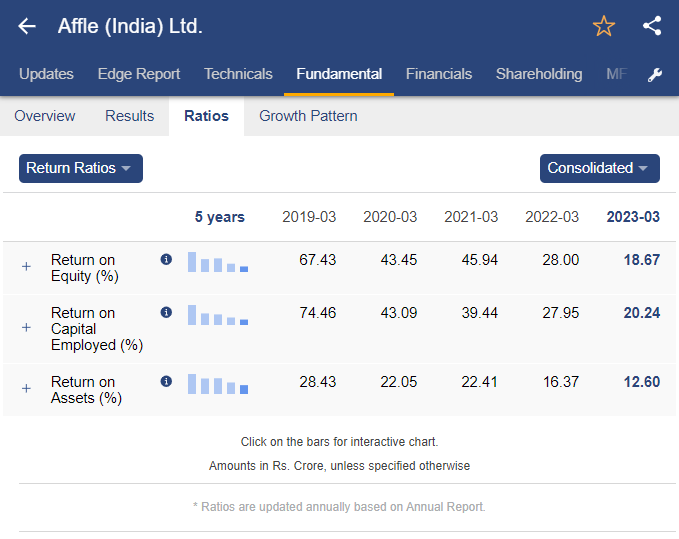20 Excellent Reasons For Deciding On AI Stock Trading Websites
20 Excellent Reasons For Deciding On AI Stock Trading Websites
Blog Article
Top 10 Tips On How To Evaluate The Customer Support Of Ai Stock-Predicting/Analyzing Trading Platforms
Support from the customer is crucial when selecting the best AI platform for analyzing and predicting stocks. A reliable, prompt support system can make a big difference on resolving any issues, maximising the platform's usage, and ensuring that trading goes effortless. These are the top 10 suggestions for evaluating customer support for these platforms.
1. Assess the Availability of Support
24/7 support: Verify if your platform offers support around-the 24/7, which is crucial for trading in real-time and global markets.
Business hours: If there is no 24/7 support available You should make sure that support is in place at your trading times.
Holiday coverage: Make sure to see if you can get support on weekends, holidays, and market closures.
2. Test Response Times
Initial response. Contact customer support and ask them a sample question to determine how quickly they respond.
Time to resolve It is not enough to simply acknowledge the problem however, you must also establish the time it will take you to resolve it.
Live chats: If live chat is available Check the response time and effectiveness.
3. Assess Support Channels
Multiple channels: Make sure that the platform has assistance in various channels (e.g. phone, live chat, email as well as social media).
Preferred channel: Check if the support channel you prefer (e.g., phone or chat) is accessible and reliable.
Self-service options: Search for a comprehensive knowledge base, FAQs or community forums for quick solving problems.
4. Evaluation of the quality of support
Expertise: Support agents must know about the platform and trading issues.
Problem-solving: Evaluate whether the support agent can resolve difficult issues efficiently or escalate these in a timely manner.
Professionalism: Find out if the customer service interactions are pleasant and professional. They should also be helpful.
5. Make sure you are in touch with the Account Manager
Premium support: Check to determine if customers of premium plans, or who are institutional customers, have access a dedicated account manager.
Account managers who provide an efficient and customized service.
Relationship building: Find out if Account managers are able to be reached and build long-term connections with users.
Review Documentation
Knowledge base. Make sure that the platform is a well-organized database of guides, tutorials and solutions to troubleshooting.
Video tutorials See if you are able to find videos on the platform.
API documentation. API documents are important to developers.
7. Assessing Community and Peer Support
User forums: Check whether the platform hosts an active user community or forum in which users can share tips and solutions.
Social media forums: Search for groups on social media that are not official (e.g., Reddit, Facebook, LinkedIn) where users discuss the platform.
Community engagement: Find out whether team members are active participants in discussions or forums within the community.
8. Evaluate Escalation Processes
Problems that escalate: Make sure there is an appropriate procedure in place to the escalation of unresolved issues to higher levels of support or management.
Follow-up: Ensure that support has followed-up on a concern after the issue has been resolved to confirm that the issue was completely solved.
Feedback loop - Verify whether the platform collects feedback from customers in order to enhance customer service.
9. Test Support During Critical Conditions
Market volatility: Contact assistance during times of high volatility and assess their responsiveness.
Technical issues: To find out how support can resolve a specific problem (e.g. login issues or discrepancy in data) Try to simulate the issue.
Trade execution - Make sure that support is available to assist in urgent trade-related issues (e.g. orders not being executed, delays in execution).
Look through User Feedback for support
Online reviews: Read user reviews on platforms like copyright, G2, or Reddit to determine general satisfaction with support.
Testimonials and Case Studies Find reviews or case studies that highlight the positive experiences of customers.
Complaints: Find out how the platform handles complaints and negative feedback about the support.
Bonus Tips
Check out the platform during a trial or demo period.
Support for your language: If English is not your first language, it is best to check to see if it's available.
Training and onboarding. Make sure the platform has sessions available for training or onboarding new users.
These tips will aid you in assessing the quality of customer service provided by AI trading platforms that predict/analyze price fluctuations in stocks. Then, you will be able to choose a trading platform providing reliable, prompt, and dependable assistance. The quality of customer support will enhance your overall platform experience and enable you to get the most benefit from the features of the platform. Read the top rated more info for best free copyright trading bot for website info including best ai stocks, best ai copyright trading bot, ai stocks to invest in, invest in ai stocks, best ai trading platform, best ai trading app, stocks ai, ai coin price prediction, incite ai, best stocks to invest in and more.
Top 10 Tips To Assess The Risk Management Of Ai Stock Predicting/Analysing Trading Platforms
Risk management plays a vital function in any AI-based stock trading platform. It protects your capital by limiting losses that could occur and assists you in maximizing profits. A platform that has robust tools for risk management can aid in the navigating of unstable markets and help you to make informed choices. Here are 10 top strategies for evaluating the risk management capabilities of these platforms: capabilities:
1. Examining Stop-Loss or Take Profit Features
Flexible levels: Ensure that the platform allows you to determine take-profit and stop-loss limits for each trade or strategy.
Make sure you are able to use trailing stops. They will automatically adjust if market conditions shift in your favor.
It is important to determine if there are any stop-loss options that can ensure that your position will close at the designated price, regardless of whether markets are volatile.
2. Effective Tools to Assess Position Size
Fixed amount - Make sure that you can define the size of your positions in relation to a set amount.
Percentage of portfolio Manage your risk by setting the size of your portfolio proportionally in terms of per percentage.
Risk-reward Ratio: Ensure that the platform supports setting up individual risk-reward levels.
3. Look for Diversification Aid
Multi-asset trade: Make sure that your platform can handle trading across different asset classes (e.g. ETFs, stocks or forex) to diversify your portfolio.
Sector allocation: Find out whether the platform offers tools to monitor and manage exposure to sectors.
Geographic diversification. Verify whether the platform can trade internationally and spread geographic risk.
4. Evaluate the Margin and Leverage Controls
Margin requirements - Make sure that the platform clearly explains margin requirements clearly.
Check if your platform allows you to limit leverage to manage risk exposure.
Margin call - Check to see if your platform notifies you of margin calls promptly. This can help avoid liquidation.
5. Evaluation of Risk Analytics and Reporting
Risk metrics. Be sure that the platform has key risk indicators (e.g. VaR Sharpe Ratio, Drawdown) relevant to your portfolio.
Scenario analysis: Check whether the platform allows users to create different market scenarios to assess the potential risk.
Performance reports - Make sure that the platform includes detailed performance reporting, including risk adjusted returns.
6. Check for Real-Time Risk Monitoring
Portfolio monitoring: Ensure your platform provides live monitoring of the risk exposure to your portfolio.
Alerts & notifications: Verify the ability of the platform to send real-time alerts for risksy events (e.g. breached margins, Stop losses triggers).
Risk dashboards – Check to see if your system has customizable risk dashboards. This will provide you with more information about the risks you're facing.
7. How can you assess the results of Stress Testing and Backtesting
Stress testing: Check that the platform will allow you to test your portfolios or strategies in extreme market conditions.
Backtesting. Check whether the platform permits backtesting. This is the use of data from the past to evaluate risk and performance.
Monte Carlo simulations: Verify whether the platform utilizes Monte Carlo simulations to model a range of possible outcomes and evaluate the risk.
8. Risk Management Regulations Compliance Assessment
Compliance with regulatory requirements: Make sure your platform is in compliance with the applicable risk management regulations in Europe and the U.S. (e.g. MiFID II).
Best execution: Ensure that the platform follows best execution practices. It will guarantee that transactions are completed at the highest price possible in order to reduce loss.
Transparency: Make sure that the platform provides clear and transparent disclosures about the risks.
9. Examine for Risk Parameters that are User Controlled
Custom risk rule: Make sure that your platform permits you to set up your own risk management rules (e.g. maximum daily loss or maximum position size).
Automated risk control: Check that the platform is able to automate the enforcement of risk management rules according to your pre-defined criteria.
Check whether the platform permits manual overrides for automated risk control.
Review Case Studies and User Feedback
User reviews: Study user feedback and assess the effectiveness of the platform's risk management.
Case studies: Look for cases studies or testimonials that highlight the platform's risk management capabilities.
Community forums: Check whether the platform has an active user community in which traders can share tips for managing risk and strategies.
Bonus Tips
Trial period: Make use of a no-cost demo or trial to experience the platform’s risk management capabilities in realistic scenarios.
Support for customers: Make sure you have a reliable support system for risk management-related issues or questions.
Educational resources - Check to see whether the platform provides educational resources and tutorials about best practices in risk management.
Follow these tips to assess the risk-management abilities of AI trading platforms which predict and analyze the prices of stocks. Select a platform that has a high level of risk management and you will minimize your losses. It is essential to use a robust risk management tool for navigating volatile markets. See the top more help for best stocks to invest in for more advice including best ai copyright trading bot, best ai stocks to buy now, ai chart analysis, best ai stocks to buy now, ai investing tools, ai stock trading app, ai bot for copyright trading, ai stock trading app, artificial intelligence stocks, best stock analysis website and more.